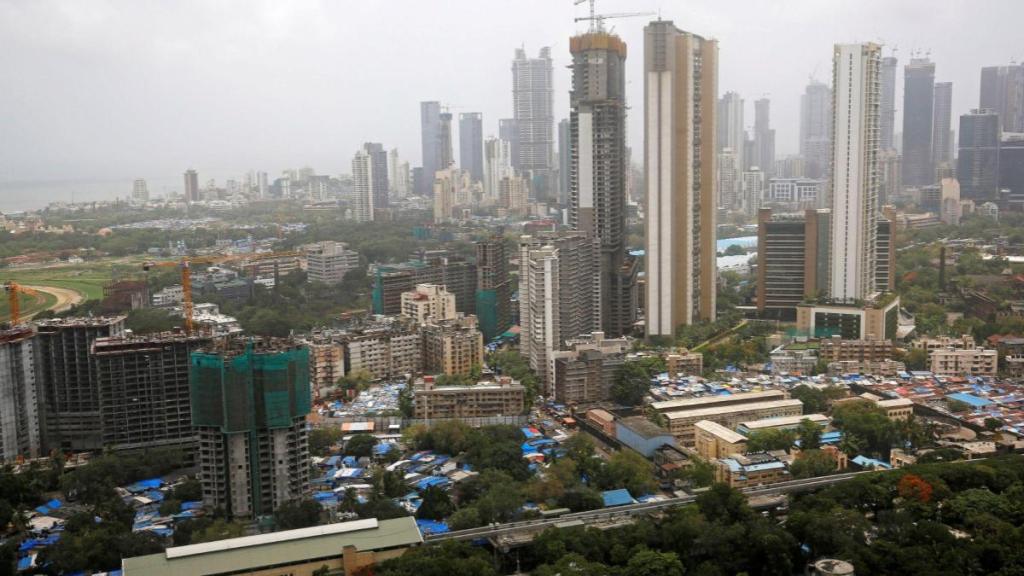By Sanjeev Sanyal and Aakanksha Arora,
India is urbanising rapidly. Any negative consequence of urbanisation leads to frequent calls for better planned cities. So, what does this exactly mean? Since independence, India has been attempting to “plan” its cities using instruments like master-plans, building bye-laws, etc. Yet, the result has been far from satisfactory.
In this article, we argue that this failure arises from trying to force-fit a “complex adaptive system” like a city into a prescriptive, static end-state. It would be far better to use a flexible framework that allows the city to evolve while maintaining civic order, infrastructure, local character of public spaces, and so on.
The key tool used by Indian urban planners is a ‘master plan’, which is basically a layout blueprint, mostly based on the principles of Cartesian zoning, that classify land parcels into residential, industrial, roads, open spaces, etc. Planners decide on desired land uses based on long-range forecasts of population and socio-economic activity. Various urban requirements such as housing, shops, offices, transport, and more are then fixed on this basis. Master-plans then freeze land-use for decades based on these forecasts. The problem is that cities rarely grow in line with forecasts, and we end up with dysfunctional cities.
The problem is not about poor forecasting, but the fact that cities, like other complex adaptive systems, are fundamentally unpredictable. For instance, in the 1980s, no one could have predicted the rise of an IT hub in Bangalore, the agglomeration of global back-offices in Gurugram and Noida, or Bandra-Kurla replacing Nariman Point as Mumbai’s financial hub.
Since a static plan is incapable of being adjusted easily to changing economic trends, ad-hoc decisions outside the framework override provisions in the plan. As mentioned by urbanist Vidyadhar Pathak, “The implementation of master plan, in terms of works envisaged, does not exceed 25% of the plan. In addition, despite elaborate development control mechanisms, 30 to 50% population lives in squatter settlements and many informal activities take place on streets.”
Similar results have been pointed out in various studies. For instance, a 2014 study by Abhay Pethe and his coauthors studied variation in actual land use from the plan of 1991-94 in the K East Ward of Mumbai. They found that land under industrial use comprised 26% and commercial use comprised 14%, as opposed to 43% and 3% respectively in the master plan. Similarly, actual land use for residential area was 18%, whereas it was planned at 36%.
A second related problem is that our regulations focus heavily on private rather than public spaces. An article by Kunal Kumar in 2023 studied the master plans of five Indian cities—Ahmedabad, Bhopal, Nagpur, Panaji, and Jaipur—and found that 75% of the regulations were about the private realm, including balcony dimensions, building setbacks, plot sizes, and so on. Only 25% regulations were about the public realm, such as street network, footpaths, gardens, etc.
Moreover, about 60% of the private clauses are laid out in minute detail, as compared with 10% of the public clauses. This fits with our previous article in this series where we argued that excessively prescriptive building bye-laws has led to the drab architecture of our post-Independence cityscape (tinyurl.com/5ecrjzf5).
This essentially means that most of the attention of urban managers is spent on enforcing what private individuals can or cannot do in their own land rather than what public authorities should do in public spaces. This is unhelpful as the character and urban form of the city is largely defined by the public realm.
Note how the current approach is analogous to the pre-liberalisation top-down planning for the economy. Though we have moved away from economic planning, the idea still dominates urban planning. Essentially, Indian urbanism is waiting for its 1991 moment. This does not mean that we are arguing for laissez-faire but as with a well-functioning market economy, for a framework of general rules that allows the system to evolve.
Addressing these issues requires a paradigm shift in our urban thinking. One way of doing this is to use Form-Based Codes (FBC) —that uses physical form and “urban experience” rather than land-use segregation as the organising principle. Micro-management of activity or land use is not the focus except for hazardous industries. This approach stresses the intended form as well as the look and feel of a place, not the use imagined by the planner. Moreover, as a more bottom-up approach, specific rules are tailored to local context.
Incidentally, India has traditionally used FBCs for building cities like Jaipur. The city was developed by Sawai Jai Singh with the help of architect Vidyadhar Bhattacharya. The city was designed in a basic grid, with infrastructure like roads and public space laid down in a single phase. After this, construction focused on a following a certain Rajput-Mughal architectural style along with a uniform colour (pink), which ended up giving the city a uniform façade. With time, the palaces have gone from royal residences to tourist hotspots, and the workshops have changed their trade, but Jaipur’s old city retains its unique identity.
Urban experience is now widely used as an organising principle in many modern cities around the world. For example, Singapore has deliberately built up a dazzling, ultra-modern skyline in the last two decades by using iconic buildings, “super-trees” and the creative re-use of old buildings. This did not happen in one shot but through iteratively adding to an overall vision of a certain, urban experience. Delhi’s Central Vista project—which is both adding new buildings and creatively re-using old ones—should be seen as another manifestation of this idea.
This piece was to start a discussion on the need to rethink our obsession with master-planned end-states. We will discuss form-based codes in more detail in our next article.
Authors Sanjeev Sanyal and Aakanksha Arora are member and joint director, EAC-PM, respectively.
Disclaimer: Views expressed are personal and do not reflect the official position or policy of Financial Express Online. Reproducing this content without permission is prohibited.

